The Business Case for ITM’s Sootblower Intelligent Maintenance and Fouling-Directed Cleaning Solutions
Executive Summary
Sootblowers are essential for keeping recovery, biomass, and power boilers clean and efficient. However, without proper monitoring and maintenance, they can become hidden sources of steam waste, mechanical failures, and even safety risks. Integrated Test and Measurement (ITM) has developed the technologies Fouling Monitoring System (FMS) and Sootblower Fouling Detection (SFD) to address these challenges. These solutions enable operators to optimize steam usage through fouling-directed cleaning while uncovering and addressing the often-overlooked costs of sootblower operation. By continuously monitoring sootblower health, steam flow, and cleaning effectiveness, ITM helps facilities maximize performance and minimize operating costs. Installations have shown annual savings of at least $500K per year, with the potential to exceed $2M per year at large recovery limited facilities.
The Challenge: Hidden Costs of Sootblower Systems
The standard practice of periodic sootblower walkdowns has several significant drawbacks:
- Delayed Detection – Problems can go unnoticed for many days or even weeks before they are observed. Examples: poppets not opening or large packing leaks.
- Invisible Failures – Some problems cannot be effectively observed even by doing visual inspection. Examples: lance tubes cracks or complete nozzle failures.
- Progressive Damage – Many problems worsen gradually and are often not spotted until collateral damage has occurred. Examples: poppets not completely closing – leading to tube erosion or worn tracks that cause additional mechanical damage.
- Validation of Maintenance Activities –When sootblower repairs can’t be validated, they risk causing further damage or ongoing problems.
These issues can be very costly. Sootblower related damage to boiler tubes is a common occurrence which can lead to extended downtime and pose serious safety risks including recovery boiler explosion hazards. One of these incidents can easily cost a facility more than $500,000.
Other costs are more insidious but add up with time. For instance, steam leaks typically cost $75,000 per year per 1,000 lbs/hr of loss. Many sootblower systems leak as much as 5,000 lbs/hr, resulting in annual losses nearing $400,000.
Additionally, deferred maintenance or operating to failure often turns a simple repair into a complex and costly overhaul—escalating expenses by 2 to 5 times compared to proactive interventions.
ITM’s Solution: Intelligent Maintenance of Sootblower Systems
What if you could continuously monitor your sootblowers to detect issues early—before they escalate into costly failures or cause collateral damage?
ITM recognized this need and has developed SFD technology to meet it. Our proprietary solution enables Sootblower Intelligent Maintenance by applying advanced signal processing techniques to vibration data, translating it into actionable Key Performance Indicators (KPIs) that reveal critical information about the mechanical health and operational performance of your sootblowers.
Key KPIs include:
- Mechanical Fault Indicator (MFI) – Detects wear in gears, tracks, rollers, and wheels on your sootblowers.
- Steam Flow Indicator (SFI) – Identifies low flow conditions, steam leaks, or header valve problems.
- Poppet Test Results (PTR) – Finds leaking or stuck poppet valves before they become critical.
- Total Pass Differential (TPD) – Highlights performance variations between sootblower strokes (ingress versus egress). This allow operators to determine “sticky” and “non-sticky” zones, ultimately, identifying sootblowers that are suitable for more efficient one-way operation.
Responding in a timely manner to these KPIs enables boiler operators to identify issues early, minimize collateral damage, and can even verify that maintenance actions have effectively resolved the issue.
Enhanced Cleaning Though Improved Maintenance
When sootblowers are properly maintained they deliver balanced, effective cleaning across all boiler zones. However, even a single issue—such as a leaking poppet valve—can disrupt that balance. For example, one faulty valve can throw off the flow controller, reducing steam flow to all other sootblowers connected to the same header. These hidden issues can degrade the overall performance of a sootblower cleaning system.
With ITM’s monitoring systems keeping constant vigilance on the sootblowers, you will ensure that every unit operates at peak efficiency, and that any repairs made have been effective.
Planned Maintenance Versus Reactive Maintenance
Studies in process industries have shown that a predictive maintenance strategy can save significant costs versus a reactive strategy, typically in the range of 15–25%. These savings are realized by avoiding catastrophic failures, early recognition of adverse operating conditions, and extending equipment life.
The SFD Intelligent Maintenance System enables boiler operators to obtain the key information needed to make these planning decisions before failures occur. Planned outages can then be scheduled at a more convenient, cost-effective time rather than a random time when resources are limited and may not be available.
With sootblowers, avoiding extended unplanned downtime is critical, as this can lead to rapid and severe boiler fouling. Another SFD system benefit is the ability to verify that corrective actions have resolved the issue, providing both operational confidence and documentation for maintenance validation.
Fouling Directed Cleaning Using SFD and FMS
While much of the focus so far has been on the maintenance and reliability benefits of ITM’s SFD system, it’s equally important to highlight how SFD, when combined with FMS technology, enables fouling-directed cleaning – a smarter, more efficient approach to sootblowing.
Many benefits can be seen when moving away from traditional sequence-based control of sootblowing to a more demand driven system based on where and when fouling is occurring.
Key benefits of this demand-driven approach include:
- More effective use of sootblowing steam – Cleaning where fouling is worst.
- Reduced steam consumption – Utilizing one-way cleaning rather than using sootblowing steam on a surface that has been cleaned on the ingress of the sootblower.
- Optimized sootblower selection – Choosing the most effective sootblower to target fouling seen on a given heat transfer section.
In combination, these actions result in a cleaner, more efficient boiler while using less sootblowing steam.
Field results have demonstrated:
- Up to 50% reduction in sootblowing steam usage
- Typical savings of 33% across many facilities
- Fewer boiler water washes, often reduced to annual events, thanks to improved sootblowing efficiency and enhanced monitoring—including factors like liquor chemistry.
SFD – Dynamic Fouling Detection
Accelerometers mounted on the boiler structure measure the energy transfer between sootblower jets and heat exchanger surfaces. The signals generated from these sensors can be analyzed to generate several KPI’s that give operators clear insights into sootblower effectiveness and boiler fouling:
- Overall Fouling Indicator (OFI) – Tracks fouling growth over time on the boiler section stimulated by all sootblowers acting on the monitored section.
- Percent Above Threshold (PAT) – Identifies locations along the sootblower path where ash or deposit buildup is most severe.
- Daily Fouling Index (DFI) – Combines OFI, PAT and shedding data (from FMS) to prioritize sootblower operation.
By combining these KPIs, SFD helps operators determine which sootblowers are delivering effective cleaning and which are wasting steam. This enables operators—or an automated sootblower control program—to make informed decisions that maximize cleaning efficiency while minimizing costly steam consumption.
FMS – Static Fouling Monitoring
FMS uses calibrated strain gauges on boiler hanger rods to measure the weight of tube banks across multiple boiler zones. Each zone is linked to the sootblowers that operate within it. This provides operators with actionable insight into fouling distribution and sootblower performance.
- Zone-Level Fouling Maps: Track the accumulation of deposits in each section of the recovery boiler over time. These maps allow operators to correlate fouling trends with both boiler operating conditions and sootblower activity, highlighting where deposits are forming most heavily.
- Shedding Rates: Measure how effectively each sootblower removes deposits during both the forward (ingress) and return (egress) strokes, providing a direct indicator of cleaning efficiency.
By combining these metrics, FMS enables operators to evaluate fouling behavior in real time, optimize sootblower operation, and maintain more efficient boiler performance.
Directing the Intelligent Sootblower Strategy
By combining insights from both the SFD and FMS, boiler operators can optimize sootblowing operations with precision and efficiency. Together, these systems enable operators to:
- Target the most effective sootblowers to clean specific boiler zones without wasting steam.
- Validate sootblower performance in real time, instantly confirming that deposits are being removed.
- Incorporate KPIs into automated controls, allowing real-time, data-driven decisions on where and how to operate sootblowers.
The result is a sootblowing strategy that is not only more effective at maintaining boiler cleanliness but also significantly reduces operational costs by minimizing unnecessary steam consumption.
Learn more at iTestSystem.com/SFD and iTestSystem.com/FMS





